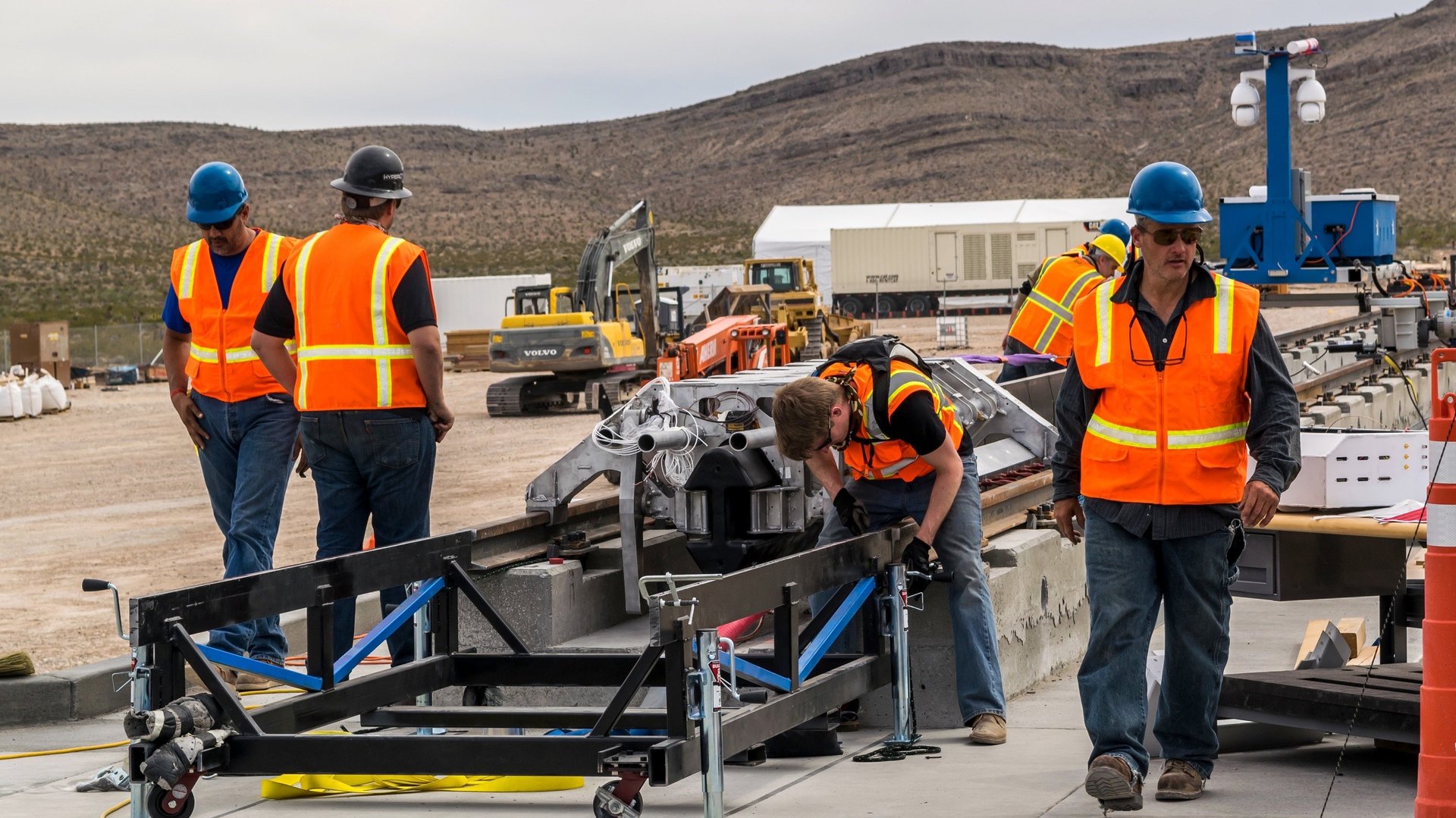Elon Musk’s Hyperloop just took a big step towards becoming a thing
The first step in the future of transportation might have just taken place in a desert in Nevada.


The first step in the future of transportation might have just taken place in a desert in Nevada.
Hyperloop One, a startup that yesterday (May 10) announced it had secured $80 million in funding to create a working version of Elon Musk’s “hyperloop” transportation concept, today completed the first public test of its propulsion system. The company hopes to be able to rapidly transport people great distances in giant tubes, at over 750 mph.
As The Wall Street Journal (paywall) noted earlier today, the test was just one of many milestones Hyperloop One will need to hit before it can begin to think about carrying anyone anywhere:
If all goes according to plan, a roughly 10-foot sled containing the propulsion motor will zip forward on tracks, for about two seconds, at 116 miles an hour. It should crash into a pile of sand, since the company hasn’t yet built brakes for the contraption. The sled won’t carry any passengers.
It seems the test went just as expected, but it remains a far cry from the dream Musk shared three years ago, of an electromagnetic train system pushed down a tube of compressed air, that could potentially carry large numbers of people great distances in seemingly impossibly short periods of time. Musk envisioned completing the 380-mile trip from San Fransisco to Los Angeles in just half an hour using his hyperloop idea. But, given that he is currently running SpaceX and Tesla, and is the chairman of his cousin’s solar energy firm SolarCity, Musk didn’t feel he had enough time to devote to the hyperloop, so he gave the concept to the world.
There are now multiple companies vying to turn Musk’s idea into a reality. Hyperloop One hopes to turn its concept into a test of an entire hyperloop system—including a passenger pod to run on the system—by the end of the year, according to the Journal. Hyperloop One has been backed by large infrastructure firms like GE and SNCF (France’s national rail line). Another company, Hyperloop Transportation Technologies (HTT), said earlier this week that it was working on a new magnetic technology that would make its hyperloop system considerably faster and safer than modern high-speed train lines. In March, HTT announced that it was in talks with the Slovakian government to potentially build a hyperloop in the country.
But it’s still very early days for this technology. Both companies still need to prove they can produce systems that would actually work at scale, and even when they’ve achieved that, they’ll still need to find the funds to build such a massive infrastructure project. Musk apparently calculated that a hyperloop for his dream San Francisco-Los Angeles route could cost as much as $6 billion to build, although according to the New York Times, it could cost a lot more. (For reference: Amtrak estimates that a new high-speed rail line for the Northeast US would cost upwards of $150 billion, according to CNN.)
But perhaps if these companies solve these problems, get the necessary funding, and manage to build their systems, long-distance mass transit will soon be no more difficult than jumping on the subway. Assuming that’s a good thing, that is.